PhotoPlus picks its Canon Gear of the Year
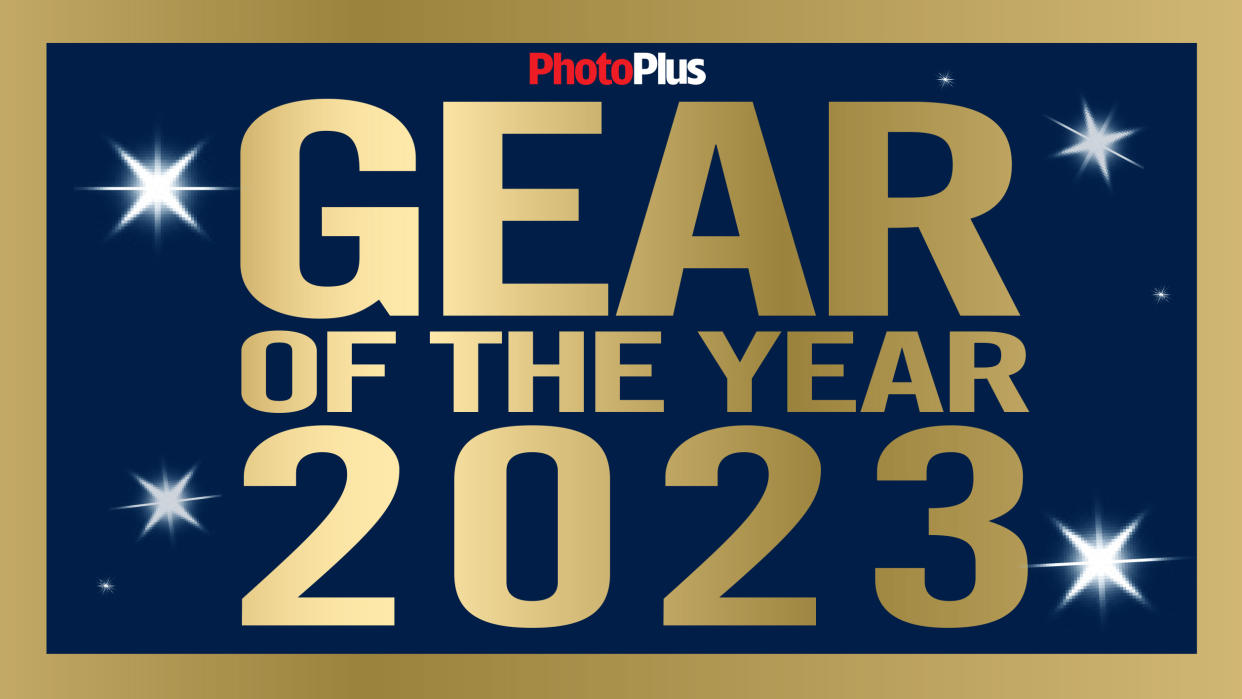
This year, perhaps more than any other, we’ve been truly amazed. PhotoPlus has been running for more than 16 years now and, for each and every one of them, we’ve had a sparkling stream of new Canon kit passing through our hands and our test lab. Some EOS cameras, lenses and accessories have always shined more brightly than others but, over the last 12 months, we’ve tested and reviewed new kit that has had a real wow factor. Not just once or twice, but over and over again.
A couple of the camera launches over the last year really stand out, but the emphasis in 2023 has been on lenses. RF mount glass for EOS R cameras has mightily impressed us right from the start, but everything just keeps getting better, with new lenses to suit every need and budget. So, here’s the kit that’s really bowled us over; worthy award winners, one and all…
Here are the highlights of Canon's 2023, as chosen by PhotoPlus: The Canon Magazine. To see the rest of the picks, make sure to check out the latest issue!
Best entry-level Canon camera
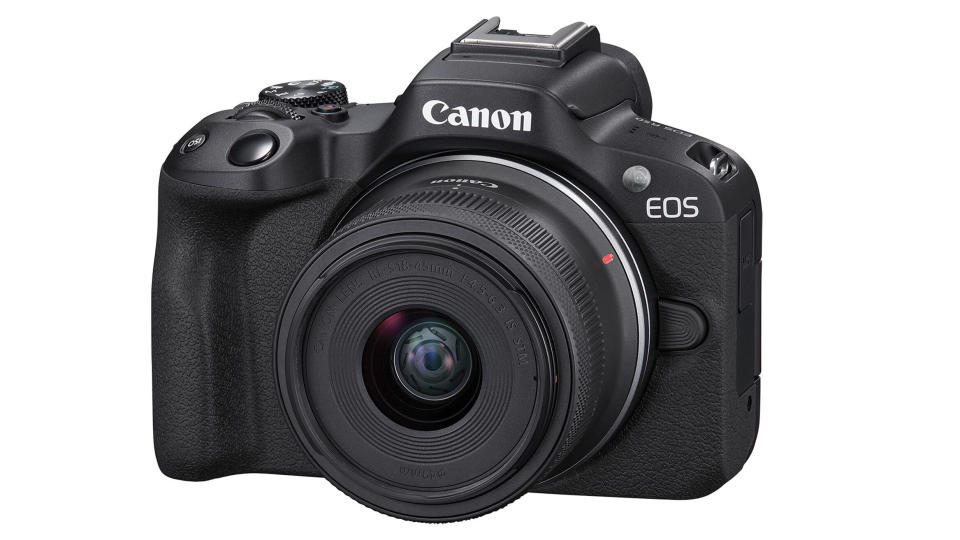
What we love
For an entry-level EOS R system camera that’s ideally suited to beginners, the EOS R100 has a rock-bottom price tag. But for a few dollars more, we much prefer the EOS R50. It has a newer 24.2MP sensor and DIGIC X image processor, enabling the latest performance enhancements, such as deep-learned AI autofocus for people, animals and vehicles. Around the back, there’s a vari-angle touchscreen, whereas the EOS R100 only has a fixed screen that’s not touch-sensitive. It’s also great for shooting 4K HDR movies.
What’s missing?
Like all APS-C format EOS R mirrorless cameras apart from the R7, the EOS R50 lacks in-body image stabilization.
Why upgrade?
If you want to upgrade from an entry-level DSLR to a higher-performance EOS R system camera, this one gives the most bang per buck.
Best APS-C wide-angle zoom
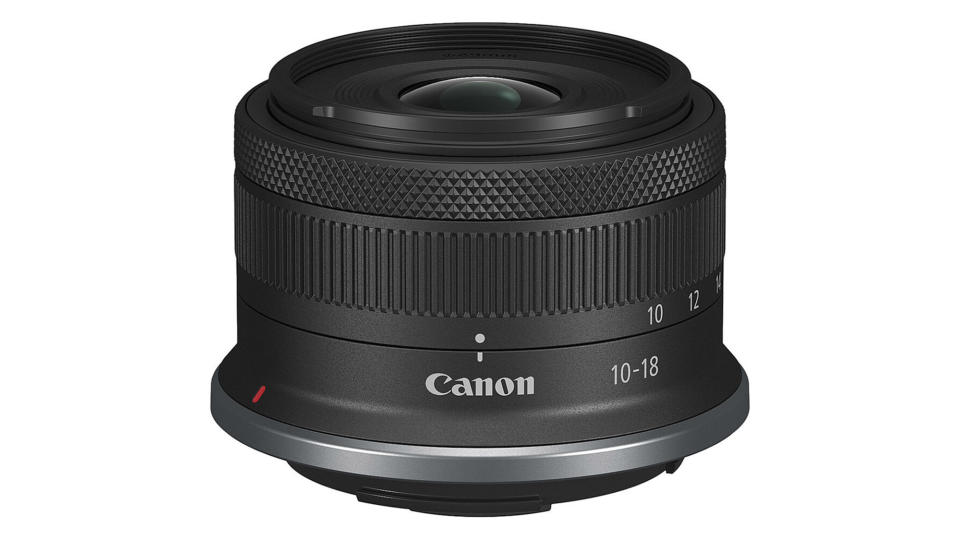
Canon RF-S 10-18mm F4.5-6.3 IS STM
What we love
We love the super-small, lightweight design of this, especially considering that it’s an ultra-wide-angle zoom. Its epic viewing angles are ideal for landscape and architectural interiors, as well as vlogging, when you also want to capture your surroundings to set the scene. And despite its size, it has a 4-stop optical image stabilizer for shake-free handheld shooting.
What’s missing?
Typical of Canon’s budget-friendly lenses, it doesn’t come with a lens hood so you’ll need to buy one.
Why upgrade?
If you’ve got an APS-C format EOS R, this is perfect for really wide-angle photography and video capture.
Best budget Canon full-frame camera
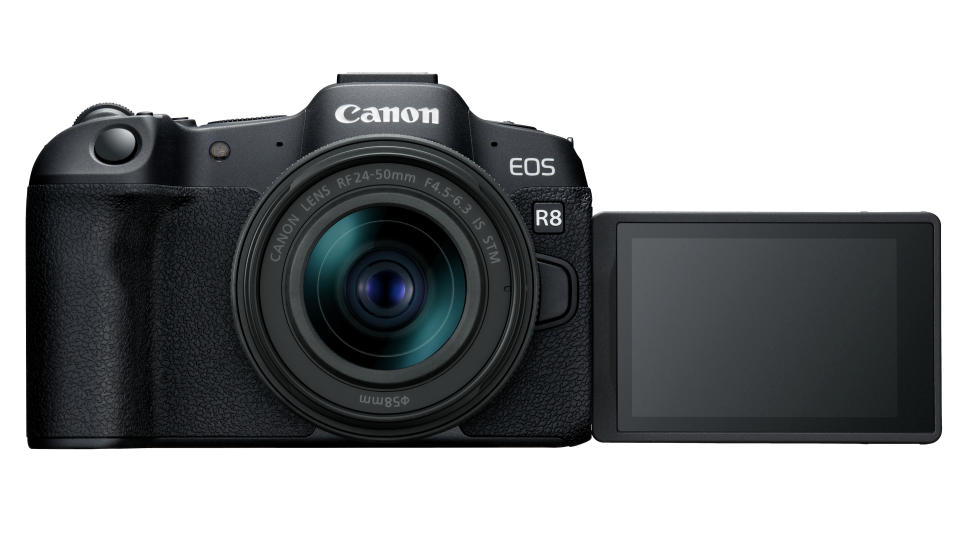
What we love
We love that the EOS R8 is so compact and lightweight for a full-frame camera, even by mirrorless standards. And there really is a lot to love here. It has the latest 24.2MP Dual Pixel CMOS II sensor and DIGIC X processor, as featured in the EOS R6 Mark II, along with the full range of deep-learned AI autofocus recognition. And although the maximum drive rate tops out at 6fps, it’s boosted to a super-fast 40fps in fully electronic shutter mode, again matching the R6 Mark II, and with a generous buffer depth.
What’s missing?
Like the EOS RP, to which the R8 is a natural successor, it has no in-body image stabilization, instead relying on the optical stabilization of IS lenses.
Why upgrade?
The EOS R8 leaves all of the APS-C format R system cameras in its wake for high-ISO dynamic range and signal-to-noise.
Best all-rounder Canon camera
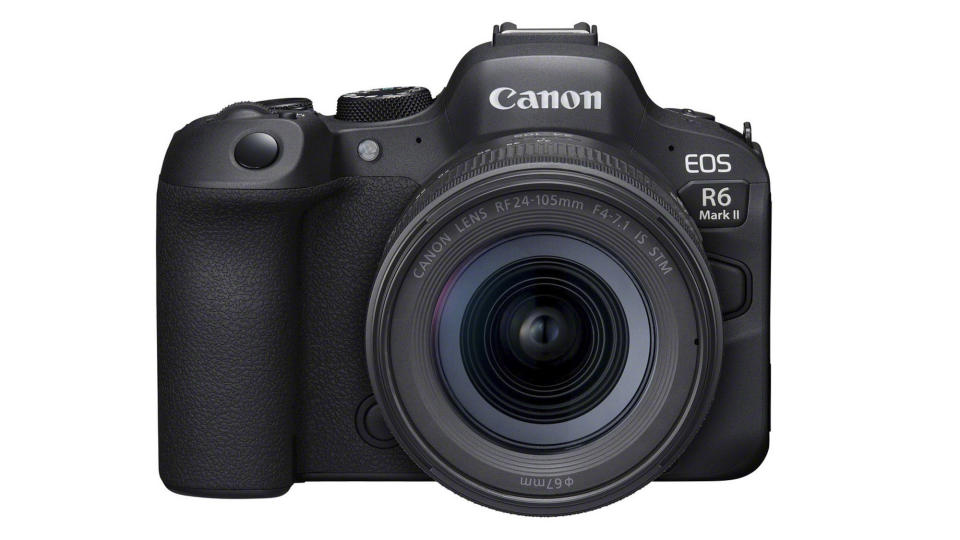
What we love
This full-frame camera can take pretty much anything its stride, from portraiture, weddings and events to the most demanding sport and wildlife photography. We love that the modest 24.4MP count gives the upside of squeaky-clean high-ISO image quality and that the 12fps drive rate rises to a blazing-fast 40fps in electronic shutter mode. Shutter speed itself is also pretty phenomenal, topping out at 1/16,000 sec in electronic shutter mode for freezing even the fastest-moving subjects. It does equally well at slow shutter speeds, with in-body stabilization that’s worth up to eight stops, even when using some lenses that don’t feature optical stabilization.
What’s missing?
The maximum image resolution isn’t massively high in terms of megapixels but should prove more than adequate.
Why upgrade?
For performance in all kinds of stills and video capture, the R6 Mark II is the perfect all-rounder.
Best EOS DSLR
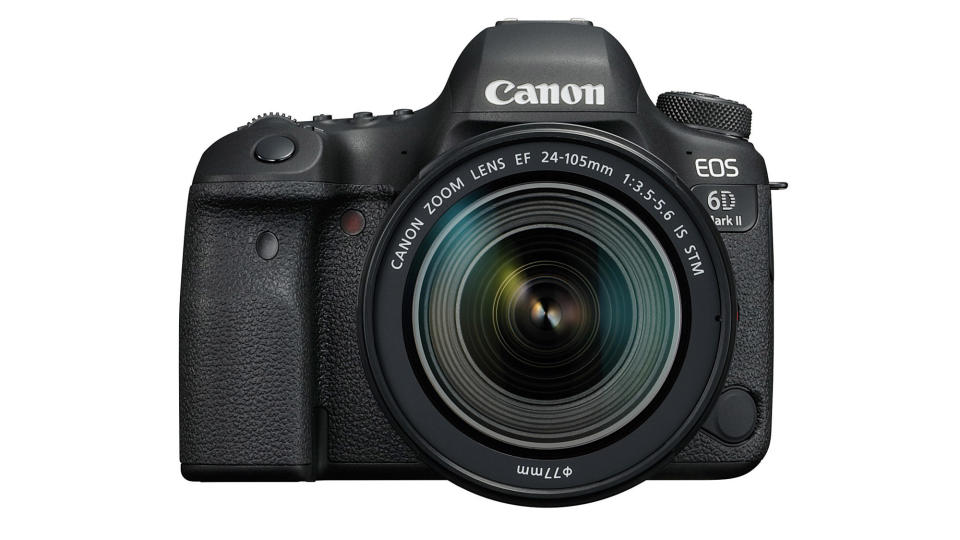
What we love
We love that this combines the best bits of a conventional DSLR and a mirrorless camera in a way. On one hand, it has a proper optical viewfinder; on the other, it features Dual Pixel AF for radically enhanced Live View performance and movie autofocus. Movie capture also benefits from sensor-shift stabilization, and the vari-angle touchscreen is a neat twist. The Mark II is a huge upgrade over the original 6D, which made full-frame photography affordable. And at the price, the Mark II is still great value for a full-frame camera.
What’s missing?
As with any EOS DSLR, it can’t take advantage of the faster data transfer rates and all-round performance of R system lenses.
Why upgrade?
It’s better than the original 6D in every way, and perfect for anyone who doesn’t need a fully pro-spec full-frame DSLR or mirrorless.
Best compact pro Canon camera
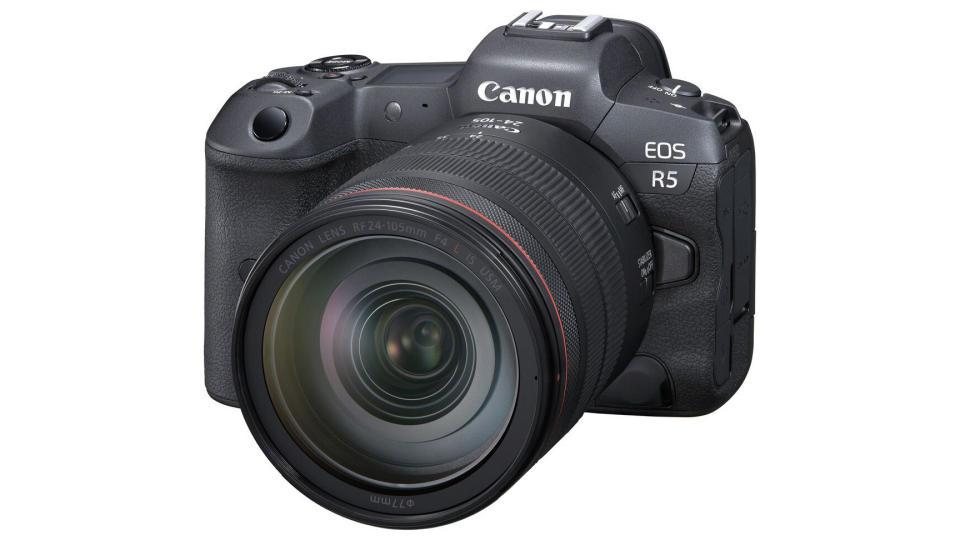
What we love
The EOS R5 is a real game-changer. It’s an aspirational camera that has stolen the hearts of the most demanding professional photographers the world over. Along with the original EOS R6, it ushered in sensor-shift image stabilization that works flawlessly on its own, and gives up to 8-stop performance with many RF lenses, whether or not they feature optical stabilization. Handling and build quality are exemplary, and the camera puts 8K video capture on the menu. We love that the 45-megapixel sensor delivers amazing resolution and also gives the option of 17MP stills in 1.6x crop mode.
What’s missing?
High-ISO images aren’t as ultra-clean as from the EOS R6 Mark II but if you down-sample them to the same megapixel count, they look very similar.
Why upgrade?
Combining a mighty megapixel count with a fast 12/20fps stills drive rate and 8K video capture, the EOS R5 is a force to be reckoned with.
Best sport/action Canon camera
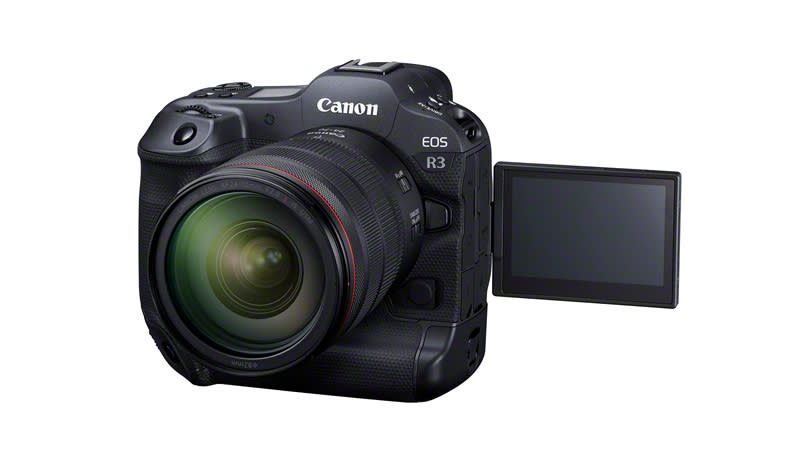
What we love
There’s so much to love about the new EOS R3, it’s difficult to whittle down a shortlist. Naturally, we’re massive fans of the fully pro-grade handling and super-sturdy build quality but it’s what lies beneath that’s most impressive. It doesn’t miss a beat with 30fps stills shooting and video at up to 6K 60p and 4K 120p. The clincher is that, thanks to a revolutionary stacked image sensor and ultra-fast DIGIC X processor, data throughput is fast enough to make rolling shutter effect a thing of the past. Then there’s the amazingly intuitive eye-control autofocus, image stabilization, and more.
What’s missing?
The only thing the R3 really lacks is the kind of battery life you get from an DSLR rather than a mirrorless camera, equivalent to around 440 shots.
Why upgrade?
If you feel the need for speed along with the built-in vertical grip of a fully pro-grade body, the EOS R3 is for you.
Best DSLR Nifty Fifty lens
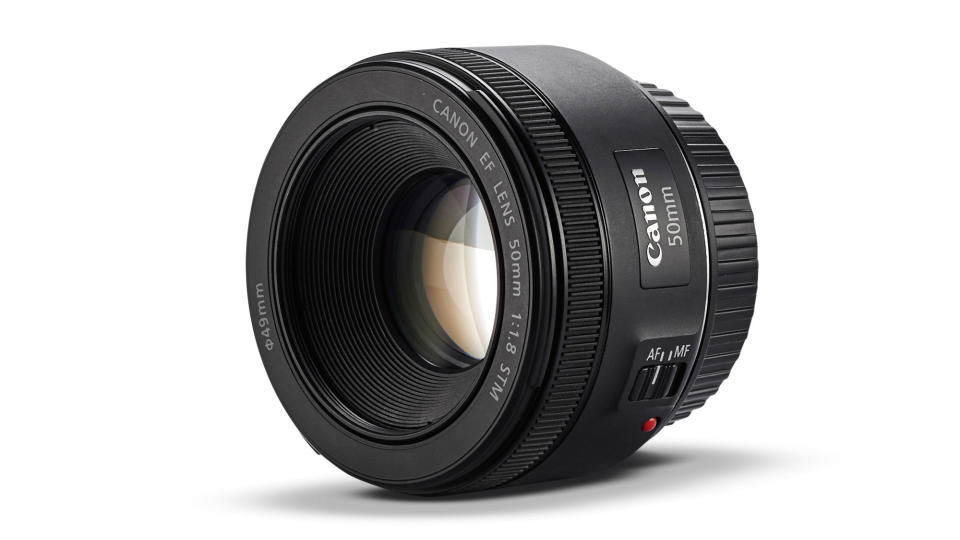
What we love
Everybody loves a bargain and they don’t get much better than this. The old version of this lens was a popular choice, despite having a cheap-feeling build, a plastic mounting plate, a noisy autofocus motor and a very poorly rounded aperture based on just five diaphragm blades. This latest edition ticks all the right boxes on the to-do list of improvements, with better handling, a metal mount, STM autofocus, and a seven-blade diaphragm. And despite all the upgrades, it’s barely any dearer than the older lens.
What’s missing?
Despite featuring an STM autofocus system, AF is merely quiet rather than practically silent, which can be an issue for movie capture.
Why upgrade?
Faster shutter speeds under low lighting and a shallow depth of field for portraiture are the major selling points.
Best compact Canon standard zoom lens
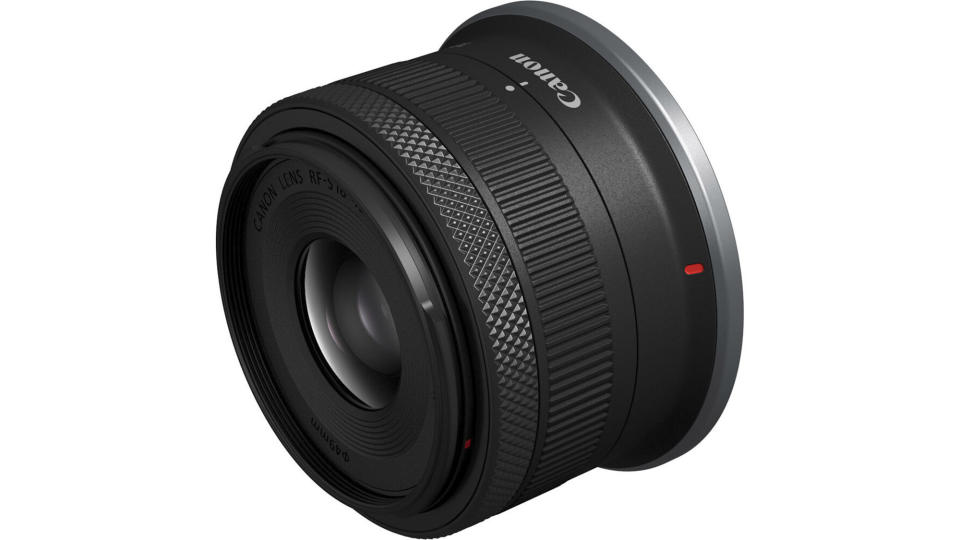
Canon RF 24-50mm F4.5-6.3 IS STM
What we love
When we’re walking the city for street shots, trekking into challenging terrain for landscape opportunities, or jetting off on our travels, a small lightweight camera outfit is the order of the day. Full-frame compatible zoom lenses don’t get any smaller than this. We love that it’s so lightweight yet covers wide-angle and standard focal lengths in style, complete with effective optical stabilization and snappy, near-silent autofocus. It’s a lens that truly punches above its weight.
What’s missing?
Its mounting plate is weight-saving plastic rather than metal, but it’s still robust. It also lacks weather seals.
Why upgrade?
This retractable zoom lens is super-small and weighs just 210g, making it your ideal travel companion for any journey.
Best everyday Canon prime lens
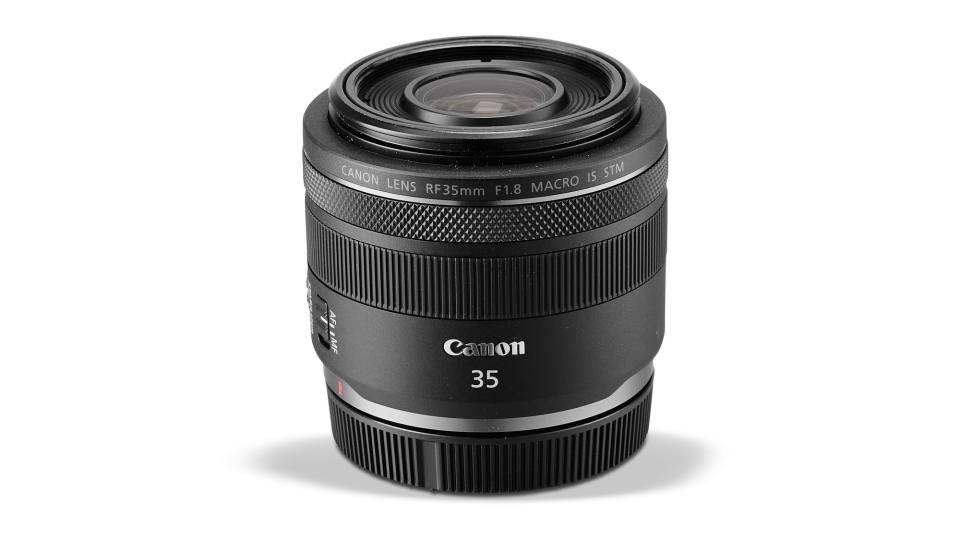
Canon RF 35mm F1.8 MACRO IS STM
What we love
Some of Canon’s RF mount lenses are pretty hefty. This one is refreshingly compact and lightweight, while going extra-large in terms of image quality and performance. It works brilliantly for everything from landscape and architectural shooting to extreme close-ups, with a short minimum focus distance that enables a 0.5x macro magnification factor. We’re particularly fond of the lens for street photography, where its compactness combined with an R-series body enables stealthy shooting without drawing attention to yourself.
What’s missing?
Some might prefer the faster aperture of an f/1.4 lens but the slightly narrower f/1.8 rating enables a small, lightweight build.
Why upgrade?
For a fast prime lens that delivers epic image quality but is compact, lightweight and supremely versatile, there’s no beating it.
Best Canon wide-angle prime
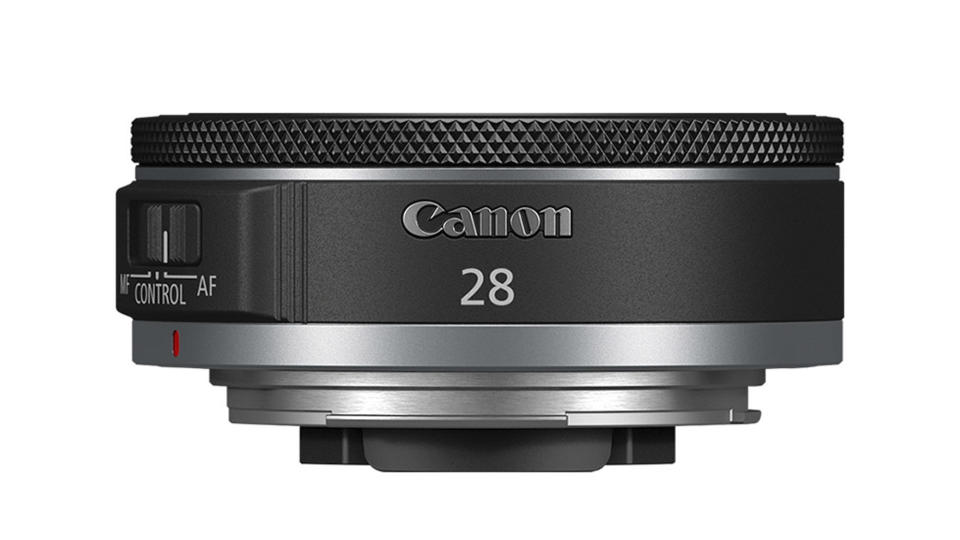
What we love
When you really want to shed the pounds, at least in weight rather than over-spending, this cost-effective prime measures just under an inch thick and weighs only 120g, qualifying it as a pancake lens. We love using it for street photography, where we want to be unobtrusive and shoot candidly. The f/2.8 aperture is a bonus, enabling fast shutter speeds even under gloomy lighting conditions. Due to the downsized design, it features a geared rather than linear stepping motor for autofocus, but it’s still swift and quiet.
What’s missing?
The lens lacks optical image stabilization but that’s only an issue if you have an EOS R system camera without in-body stabilization.
Why upgrade?
When size, or rather lack of it, is of the essence, this is an entirely capable prime lens that’s unfeasibly small.
Best Canon telephoto zoom
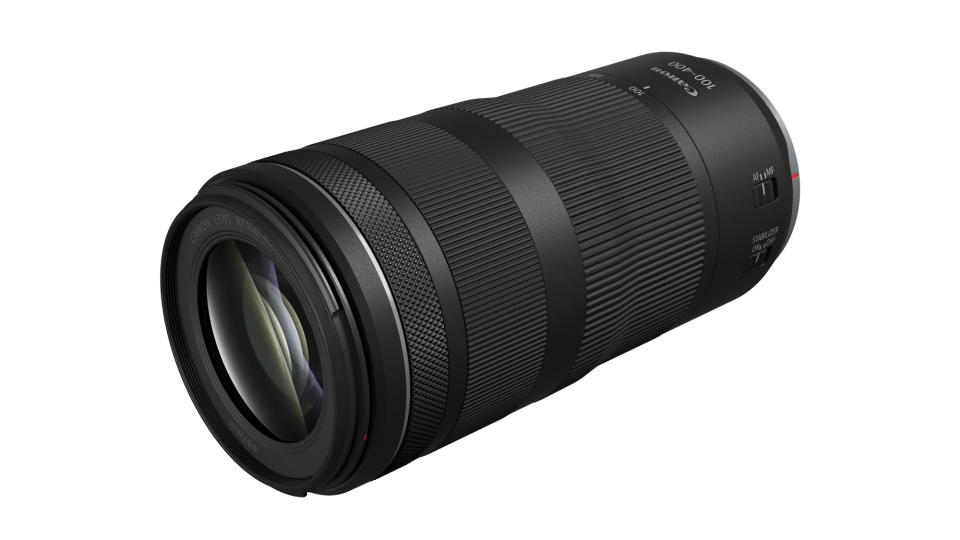
Canon RF 100-400mm F5.6-8 IS USM
What we love
If you’ve been wishing for a typically compact and somewhat classic 70-300mm telephoto zoom in native RF-mount, this lens gives you what you want and more besides. We love the more powerful 400mm telephoto reach, especially as it comes in a package that’s no bigger or heavier than most traditional 70-300mm zooms. The 5.5-stop optical image stabilizer works a treat, enabling you to shoot handheld at unfeasibly slow shutter speeds and get consistently sharp results, and the lens certainly doesn’t come up short in terms of optical sharpness either.
What’s missing?
With an aperture rating that shrinks to f/8 at the long end, it’s not a fast lens but the compact, lightweight build is a good trade-off.
Why upgrade?
The ideal telephoto counterpart to a mid-range standard zoom for EOS R system cameras, it delivers powerful reach at a competitive price.
Best Canon wide-angle zoom
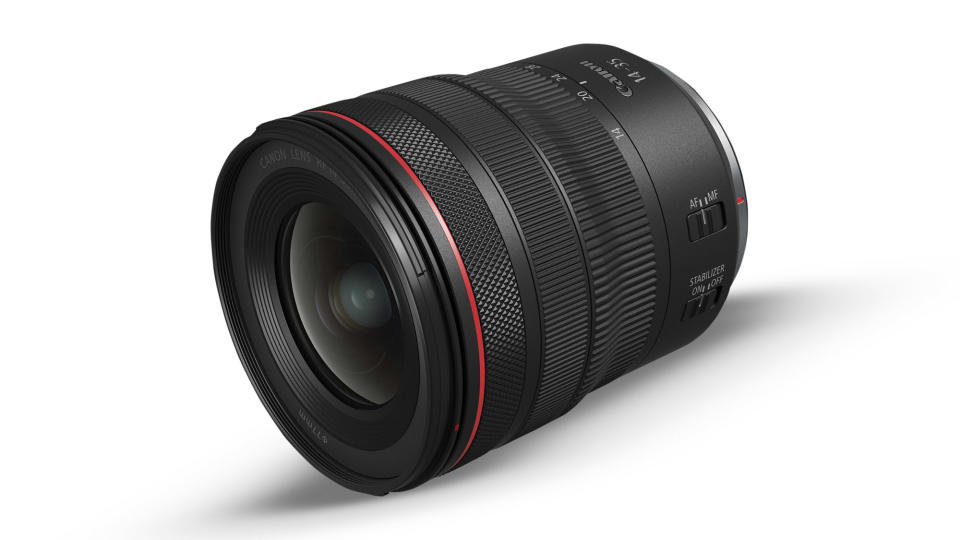
What we love
A fast aperture is good to have but it’s not a key component for ultra-wide-angle lenses, where you’re not going to get a really tight depth of field anyway. Compared with Canon’s top-drawer RF 15-35mm F2.8, we love that the F4 lens is so much more compact and lightweight, ideal when trekking across tricky terrain in pursuit of epic landscape shots, to which this lens is ideally suited. Indeed, it gives an even greater maximum viewing angle than the 15-35mm zoom while also adding optical image stabilization, so you can leave your tripod at home.
What’s missing?
Being an f/stop slower than its f/2.8 stablemate, it’s not so well suited to astrophotography.
Why upgrade?
Lightweight and stabilized, it’s ideal for architectural interiors, evening cityscapes and epic landscapes.
Best Canon budget wide-angle zoom
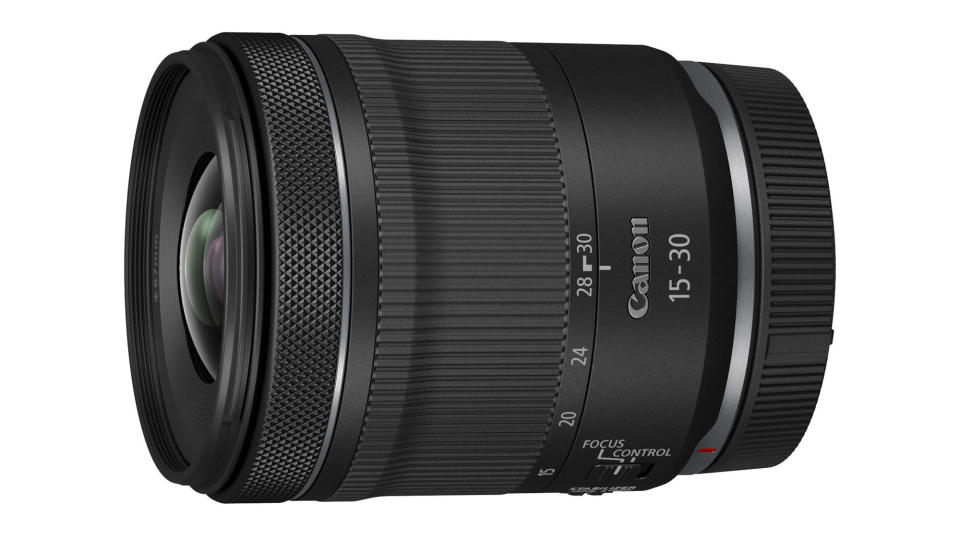
Canon RF 15-30mm F4.5-6.3 IS STM
What we love
We’re featuring other ultra-wide-angle RF zoom lenses in our awards but this is a worthy addition to the line-up. In these budget-conscious days, we love the price tag on the RF 15-30mm, and that’s not all. Despite its relatively small and lightweight design, it’s no underachiever in terms of image quality, which is impressively sharp, aided in practical terms by the inclusion of high-quality glass and a very effective 5.5-stop optical stabilizer. Although full-frame compatible, it’s also a good fit for APS-C format bodies, with an effective 24-48mm zoom range.
What’s missing?
In keeping with the budget-conscious construction, there are no weather seals on this lens and the hood is sold separately.
Why upgrade?
It’s a strong contender as a compact and lightweight ultra-wide zoom for landscapes and architecture.
Best Canon macro lens
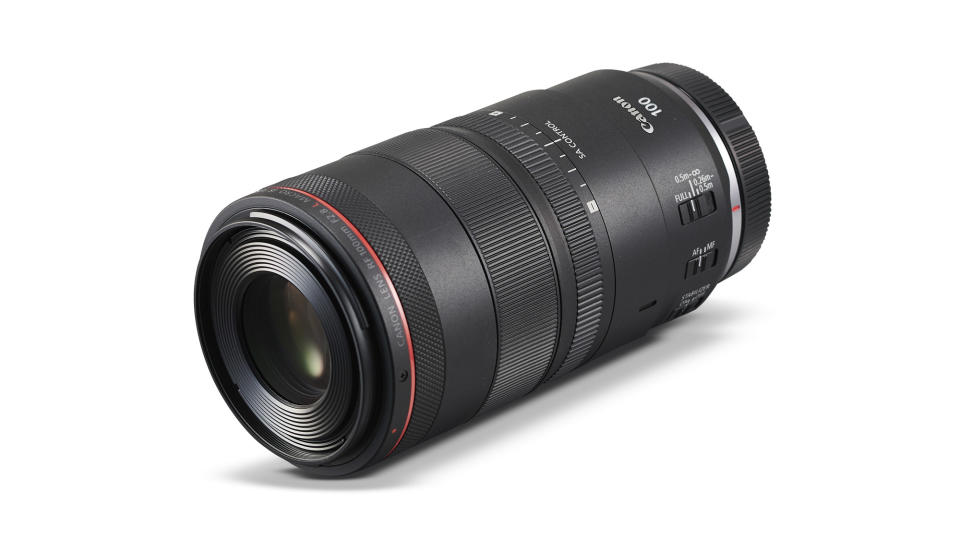
Canon RF 100mm F2.8L Macro IS USM
What we love
This macro lens has two things that we adore, making it something super-special from Canon’s RF-mount line-up. First up, it’s unique in packing an oversized 1.4x maximum magnification factor into an autofocus lens. And it autofocuses with supreme speed for a macro, along with unerring accuracy. The second is the spherical aberration control ring, which enables you to adjust the look of defocused areas within images on the fly. To top things off, the Hybrid IS system works so well that consistently sharp extreme close-up images are assured.
What’s missing?
Typically for a macro lens, it’s not supplied with a tripod mounting ring but one is nevertheless available as an optional extra.
Why upgrade?
The RF 100mm is quite simply the best macro lens that we’ve ever had the pleasure of using. It’s a must for EOS R-series cameras.
Best Canon super-telephoto zoom
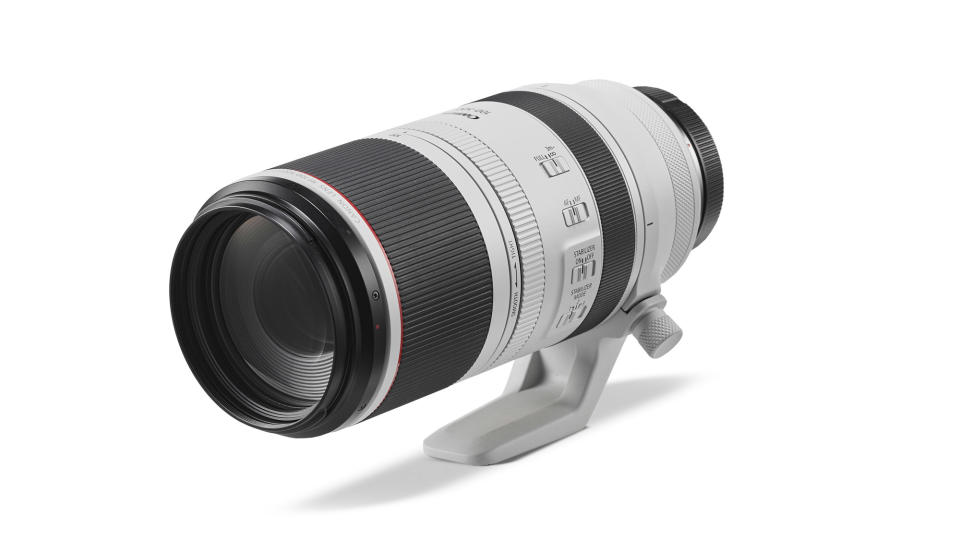
Canon RF 100-500mm F4.5-7.1L IS USM
What we love
Weighing about the same as most 70-200mm f/2.8 lenses, this fabulous RF lens goes extra-long with a mighty telephoto reach of up to 500mm. The physical length is restrained, thanks to an extending inner barrel that reduces the stowage size, as well as keeping the lens relatively small when shooting at shorter focal lengths. Don’t be put off by the f/7.1 aperture rating at the long end; autofocus works a treat, especially with the latest EOS R cameras, while the 5-stop image stabilizer helps to ensure consistently sharp handheld shots even at 500mm.
What’s missing?
It doesn’t have the faster f/4.5-5.6 aperture rating of Canon’s EF 100-400mm zoom for DSLRs, but it adds extra telephoto reach.
Why upgrade?
A mighty super-telephoto zoom for EOS R cameras, it’s ideal for action, sport and wildlife shots.
Best Canon hybrid zoom
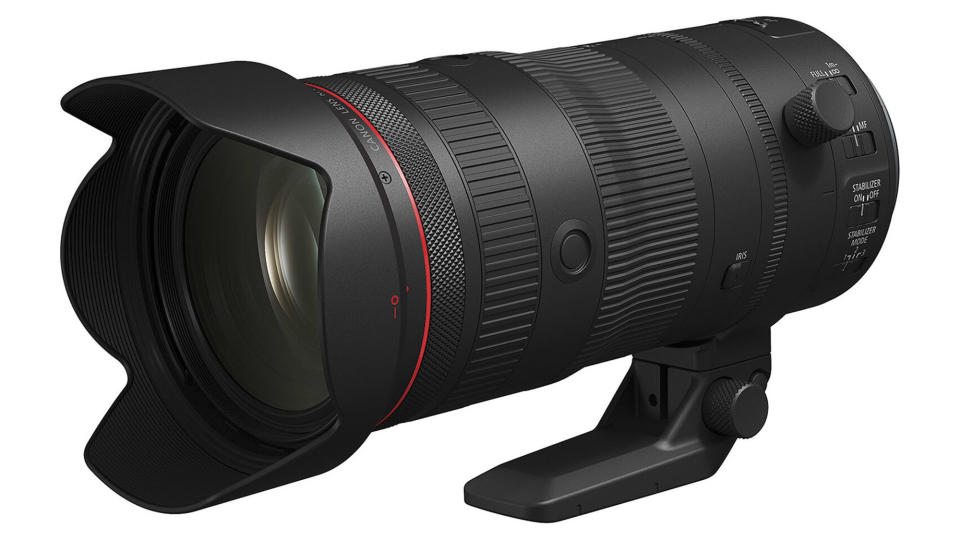
Canon RF 24-105mm F2.8L IS USM Z
What we love
Hybrid photography is all the rage and, increasingly, wedding and event photographers are expected to shoot video as well as stills. We love that this lens excels at both. The generous zoom range coupled with a fast and constant f/2.8 aperture rating enables it to excel in low light, as well as delivering beautiful bokeh. Twin Nano USM motors enable ultra-fast autofocus for stills, with super-smooth and silent transitions for video, while the optional power zoom adapter is a big bonus for the latter.
What’s missing?
As you’d expect, combining the generous 24-105mm zoom range with an f/2.8 aperture means the lens is no lightweight, at 1.3kg.
Why upgrade?
If you’re after premium quality and handling, coupled with excellent versatility for both stills and video, this lens is fabulous.
Best Canon ultra-wide angle zoom
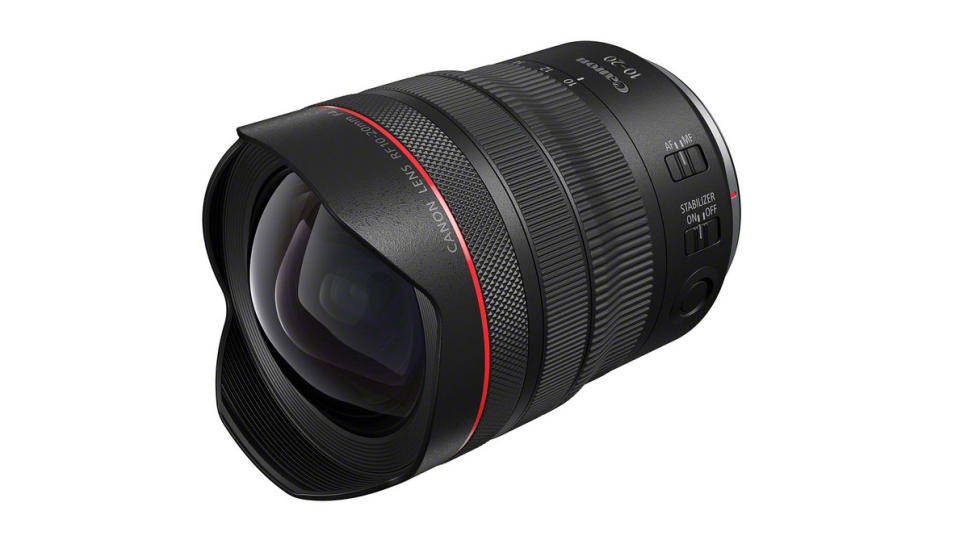
What we love
The wider the better! We reckon the incredible maximum field of view of this full-frame compatible lens makes it perfect for shoehorning as much into your frame as possible. We love its potential for landscape and architectural shots, especially for interiors when you’re cramped for space. We also love that the optical image stabilizer enables capturing night-time cityscapes without a tripod. Another bonus is the really short minimum focus distance, ideal for giving a fresh perspective to close-ups.
What’s missing?
Like many ultra-wide-angle lenses, the hood isn’t removable – a potential issue if you want to use filters.
Why upgrade?
When you want the widest viewing angles possible, without going fisheye, this lens is a treasure.
Best Canon ultra-telephoto zoom
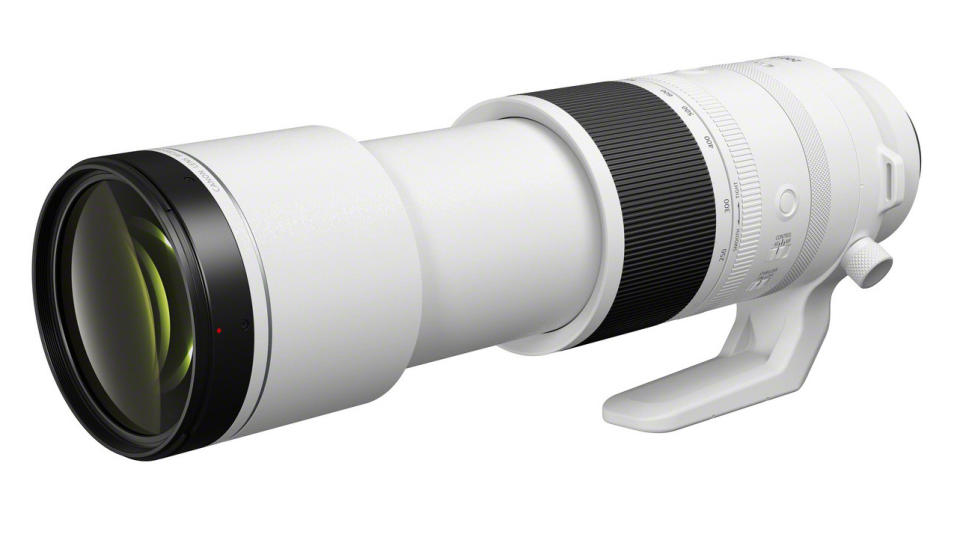
Canon RF 200-800mm F6.3-9 IS USM
What we love
Taking up a position at the opposite end of the scale from the RF 10-20mm, this ultra-telephoto zoom really goes the distance. The mega zoom range and amazing 800mm maximum focal length make it a brilliant lens for sport, action and wildlife photography. We especially love it for bird photography, when we typically can’t get as near to small subject matter as we’d like. We also like that the 2kg build and 5.5-stop optical stabilization make handheld shooting viable, and that the super-fast autofocus system is great at tracking the action.
What’s missing?
Unlike some zoom lenses, this one physically extends as you stretch through the zoom range, which isn’t ideal when using a gimbal.
Why upgrade?
With its killer zoom range and competitive price tag, this is an ultra-telephoto zoom that will appeal to enthusiasts as well as pro photographers.
Best Canon fast standard zoom
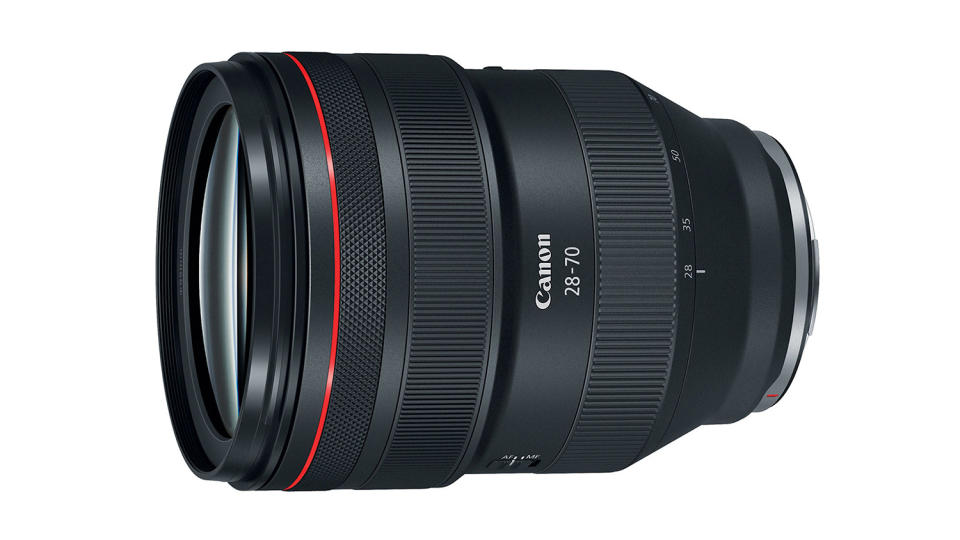
What we love
When you’re in the market for a top-quality standard zoom, the usual choice is between a more enthusiast-level f/4 or a fully pro-grade f/2.8 lens. This magnificent RF lens is a whole f/stop faster than an f/2.8 lens, giving even greater control over depth of field. More than that, image quality is better even than in most top-notch prime lenses of equivalent focal lengths, throughout the entire zoom range. It’s pretty hefty but mightier still in performance. We simply love the ability to sweep through a range of popular focal lengths with absolutely no compromise in image quality.
What’s missing?
No optical stabilization? No problem. This lens gives you 8-stop stabilization with EOS R-system cameras that feature IBIS.
Why upgrade?
For shooting weddings and other events, the zoom range and fast f/2 aperture make this lens a godsend.
Best Canon telephoto zoom
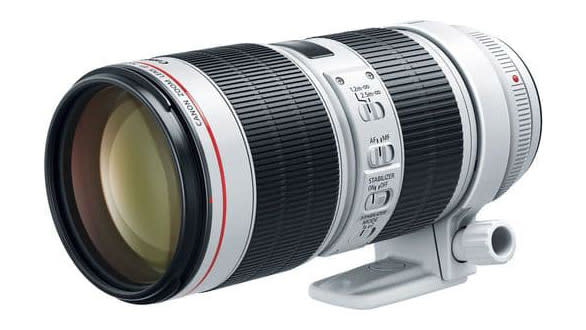
Canon EF 70-200mm f/2.8L IS III USM
What we love
Back in 2010, the Mark II edition of this lens became the go-to telephoto for top pro photographers around the world. In fact, it was so good that the newer Mark III adds very little. The autofocus and stabilization systems are much the same, as is the glass in the optical path. The key upgrade is that a high-tech ASC (Air Sphere Coating) is applied to the 19th element in the chain, which further reduces ghosting and flare. Fluorine coatings are also added to the front and rear elements to repel moisture and grease. It’s still the best 70-200mm lens on the market for Canon DSLRs, just a little better than before.
What’s missing?
Compared with the EF 70-200mm f/4 II lens, launched at the same time, this has a less effective 3.5-stop stabilizer.
Why upgrade?
If you want the best Canon-fit 70-200mm f/2.8, buy this, but it’s not worth upgrading from the Mark II.
Best EOS R Speedlite
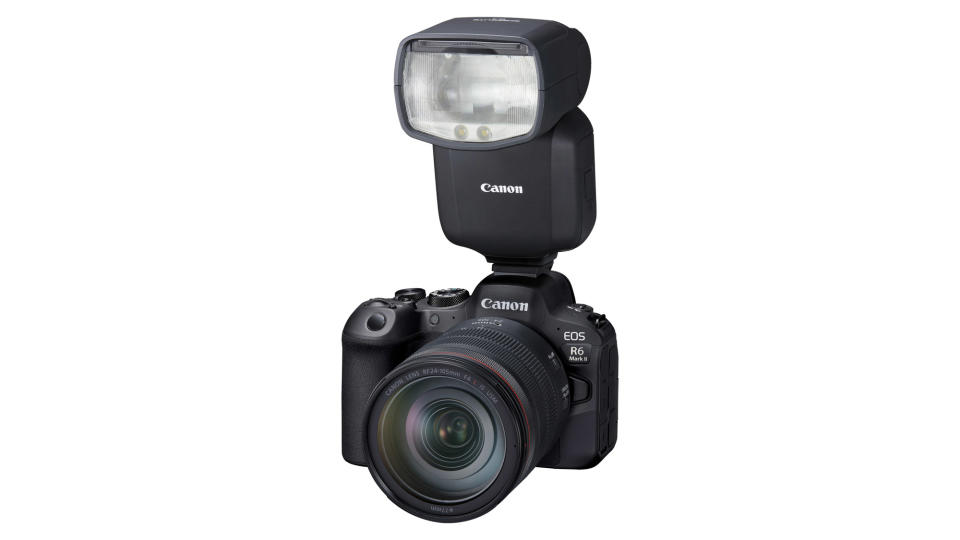
What we love
We’re big fans of flashguns that run on a rechargeable Li-ion battery pack, rather than AA cells. This does just that, so it has plenty of stamina and super-fast recycle speeds between high-power flashes. And it really is powerful, too, rated at Gn 60 (ISO100, metres) at its longest zoom setting, which itself is generous at 20-200mm in full-frame terms. We also love the secondary LED modelling lamp, wireless RF master/slave modes and that the adjustable power settings go right down to 1/1024.
What’s missing?
It’s the first Canon Speedlite designed for mirrorless R system cameras,but it’s not fully compatible with early models.
Why upgrade?
If you have a recent EOS R system camera that features a multi-function shoe, this can take full advantage of it.
Best Canon Blogging camera
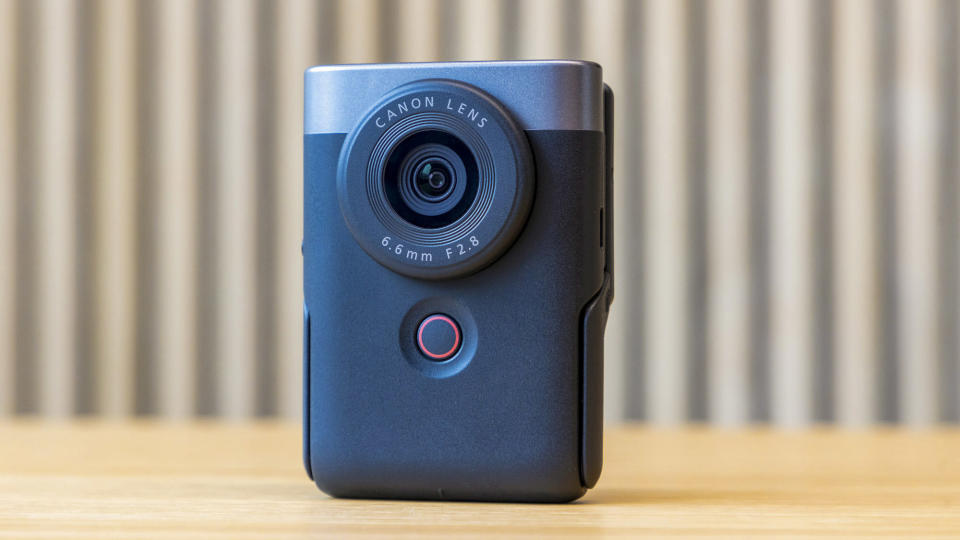
What we love
We think this is the perfect camera for when you’re vlogging – it’s purpose-built for the job. It’s small enough to fit in a spare pocket and take anywhere, yet it boasts powerful 4K and Full HD video capture, complete with high-quality sound. A 180-degree tilting screen keeps you in the picture, while its wide-angle autofocus lens takes in an impressive viewing angle. We especially like its wired and wireless connectivity, so you can share your vlogs on the go, pairing it with your smartphone via Bluetooth.
What’s missing?
The camera has a fixed lens, so while the focal length generally works well for vlogging, there’s no zoom facility.
Why upgrade?
If you’re after a dedicated vlogging camera rather than something more geared to stills, it’s a great option.
Best Canon mobile printer
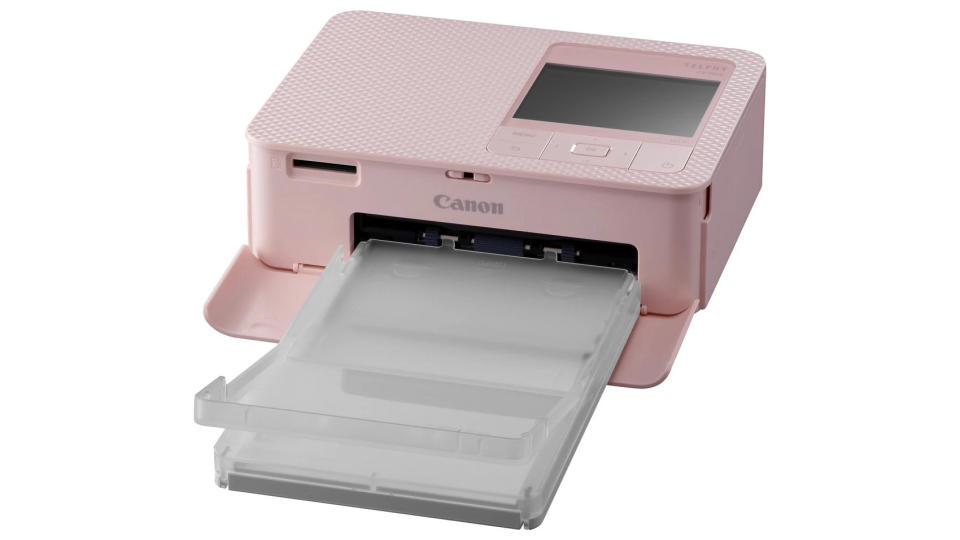
What we love
Love printing? We think there’s no substitute for creating real photo prints that you can pass around and share with family and friends. And with this portable, Wi-Fi-enabled printer, you can make prints from your camera or smartphone pretty much anywhere and everywhere. Based on dye-sublimation technology, there’s no ink to get spilled, so it really is one for the road. Lab-quality postcard prints only take about 40 seconds to print and last a lifetime.
What’s missing?
It’s a mains-powered printer, and if you want to run it off a rechargeable battery pack, that’s sold separately.
Why upgrade?
It’s all too easy for digital images to get lost in the crowd, on your computer or mobile gadget. Prints make more of a statement.
Best Canon Glossy Photo Printer
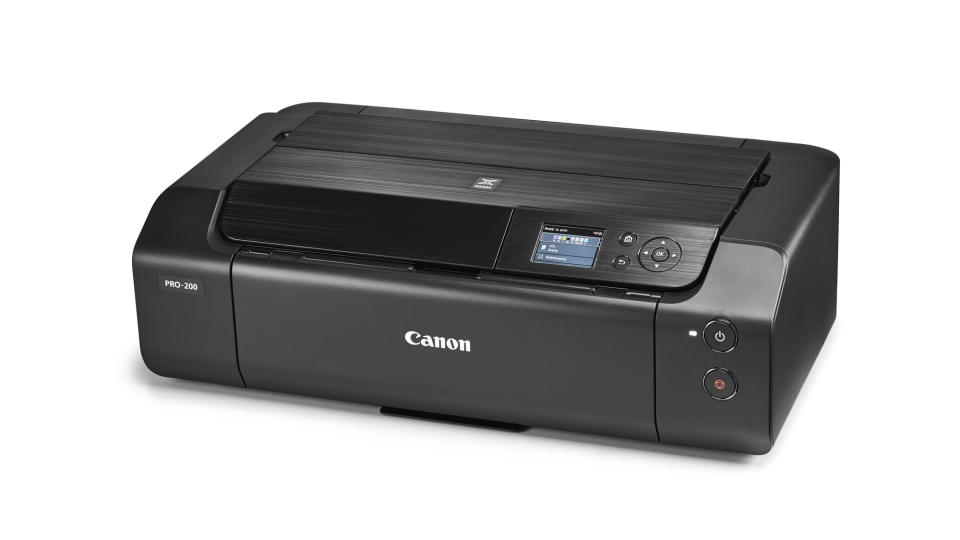
What we love
There’s no beating a dye-based inkjet printer for jaw-dropping quality on glossy and lustre/semi-gloss paper, and the PIXMA PRO-200 is the all-time best of the breed. As an A3+/13-inch printer, it’s able to output prints that are large enough to hang on the wall or in a gallery. We love that it can also deliver panoramic prints up to 39 inches in length. Better still, the eight-ink cartridge line-up delivers the best glossy photo quality of any printer we’ve ever seen, for both colour and monochrome prints.
What’s missing?
Dye-based ink is second-best to pigment ink for print quality, robustness and longevity on matte and fine art media.
Why upgrade?
With sumptuous glossy quality, an impressive turn of speed and a competitive selling price, the PRO-200 is an epic large-format printer.
Best Canon Fine-Art printer
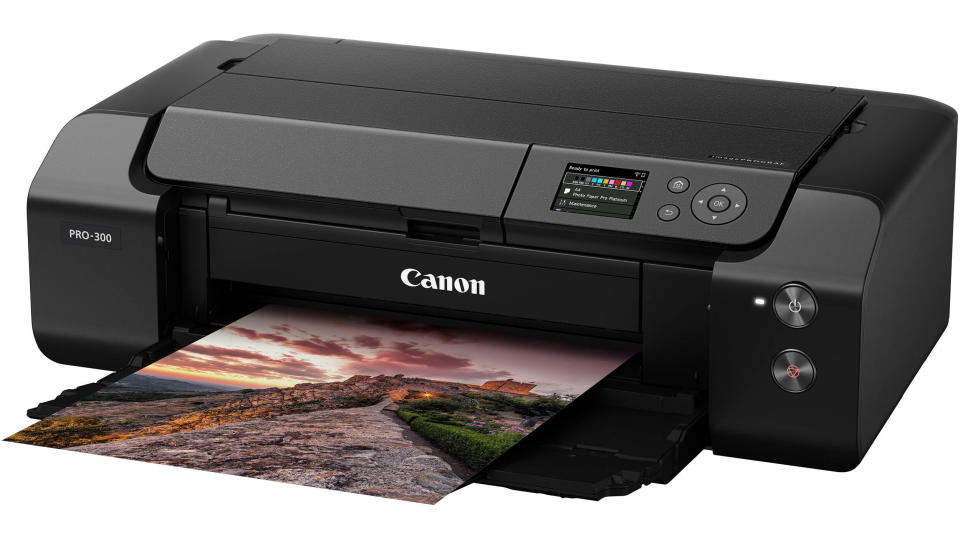
What we love
Any digital image can look hugely better in print than on screen, especially if printed on this Canon A3+/13x19-inch printer. A chroma optimizer cartridge helps maintain high quality on glossy and lustre photo papers, but it comes into its own with matte and fine-art media, delivering epic colour quality and tonal range along with incredible black-and-white performance, with a depth and detail in blacks we’ve never seen before from an inkjet. Build quality is superb, including automatic deskewing in the paper transport and optional borderless printing on matte and fine-art media, instead of just on glossy paper.
What’s missing?
For the ultimate in a smooth finish on glossy paper, Canon’s cheaper PIXMA PRO-200 has the edge.
Why upgrade?
It’s simply the best A3+/13x19-inch printer on the market for creating both colour and black-and-white photo prints on matte and fine-art media.
Read more:
Best Canon cameras
Best Canon EF lenses
Best Canon RF lenses

